I’d chosen to meet Linda for lunch at the metro Filles du Calvaire so we could start our walk at the gallery of the same name, and for once our trains arrived from different directions at the same time and I shouted her name across the tracks. A short walk away we found a decent but not exciting café for the plat du jour and a beer.
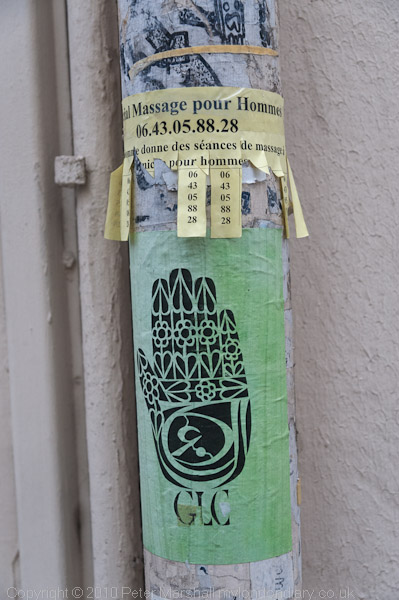
One of the pictures I took in Paris 3e between visiting shows – more below
The Galerie Les Filles du Calvaire was showing the work shortlisted for the 2010 Prix Pictet on the theme of ‘Growth’ which I mentioned in a previous post. Actually seeing the work for real rather than on the web did little to change my prejudices expressed then, except that I was rather more impressed by one of Edward Burtynsky‘s images. He is one of relatively few photographers where the large scale of the print is often vital to the appreciation of his work, although his largish images were relatively small compared to some of the other works on display as you can see from the gallery view. But whereas some of those larger works actually look better on the web – and you can see them on the Prix Pictet site – than they do on the wall, with his Highway #5, a mere 121.92 x 152.4cm is really necessary to do justice to the detailed nature of his work. Had I been asked to vote on the day from solely the evidence on the wall, this picture would have been my choice.
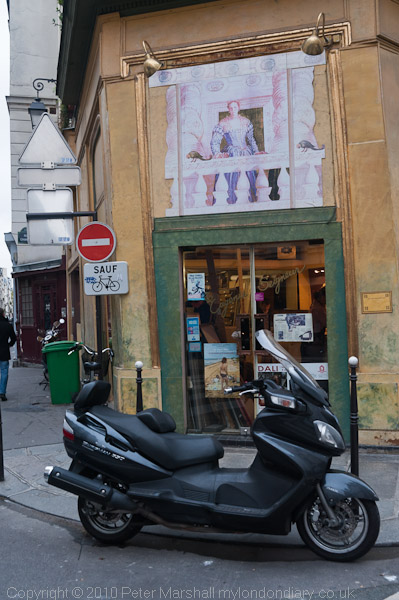
The rue des Filles du Calvaire leads on directly to the rue Veille du Temple which was studded with photography shows, including a number outside the MdP and the PhotoOFF. Most of them didn’t detain us long, a short walk around or in some cases even a look through the window was enough to convince us that they were not our kind of thing. But you can look at the work of Bertrand Flachot, Frédéric Chaubin and (in nearby rue Charlot) Arno Lam from the Photo-OFF and make your own judgement. If you think photographs are improved by scribbling on them, or that naked woman in landscape = art you may like the first two, while Lam’s work rather reminds me or some scientific photography of specimens undergoing stress tests. Some of Chaubin’s other work does seem to be a great deal more interesting that this and these three shows were of rather more interest than several that we walked past.
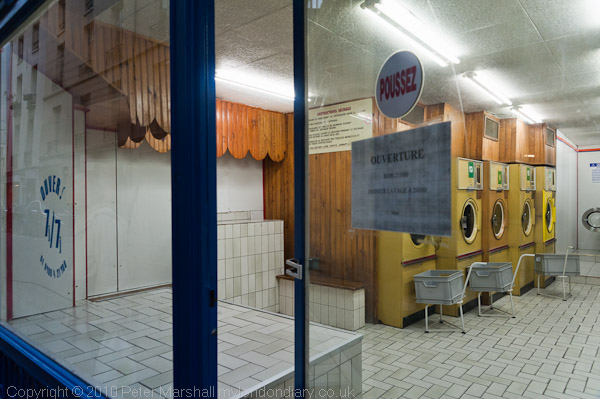
By the time we got to the Instituto cultural de México I was beginning to lose the will to live but Ombre Et Lumière there revived me. Subtitled PHOTOGRAPHIE MODERNE MEXICAINE this show featured work mainly from the 1930s by Manuel Álvarez Bravo, Agustín Jiménez et Luis Márquez. Bravo has long been one of my favourite photographers and it was good to see a fine selection of his work. Jiménez and Márquez were very much photographers of the period but beside him seem rather shallow, making pictures that are often somewhat clever but, with one or two exceptions, not profound.
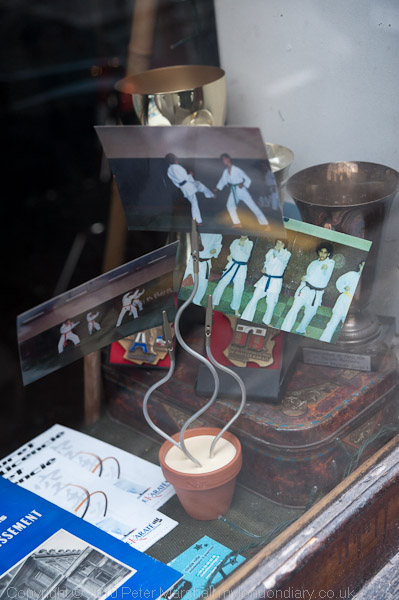
The next good show we found was around the corner in rue Perche, New York Promenade – USA Underground at Galerie David Guirand. It was an enjoyable show, and you can read a good write-up in English on Actuphoto; this enjoyable show was one of a number in Paris (I was told around 50) which included work on loan from the extensive collection of the Maison Européenne de la Photographie.
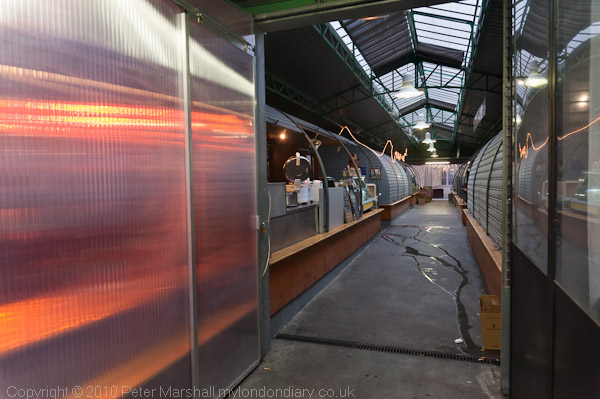
A few yards down the road was La Galerie Particuliere with ‘We Are Watching You’ including work from two projects by Michael Wolf, large blowups of found images from Google in Paris Street View and also Tokyo Compression. You can see a more extensive selection of work from his two Street View projects and the Tokyo piece, which shows people suffering from poor air quality in cars on his web site, and again I think this is work that hardly benefits – if at all – from the large prints on show. I would certainly have preferred perhaps two or three times as many smaller images.

The next show of interest we came to was a short walk away in Galerie Sinitude, where Andoche Praudel was showing his series Les champs de batailles – panoramic views of battlefields around Europe, including Glencoe, Waterloo, Agincourt in the Photo-OFF. Also in the gallery were ceramic objects by Praudel, some of which bore some resemblance to cannonballs but with intriguing texture and decoration. However it was the photographs that interested me more, quiet scenes, sometimes with a certain air of malice, nicely printed on large sheets of cotton rag paper. It was an intriguing show, and the images had an unforced quality quite at odds with much I had seen earlier in the day at PP.
Praudel works with an Art Panorama 240, a similar camera to the Art Panorama 170, made in Japan and giving three 6x24cm negatives on 120 format film. The 240 is normally used with a 105mm lens giving a rectilinear image with a horizontal angle of view of just under 100 degrees, around the practical maximum for rectilinear perspective.
The prints were around 50 by 200cm and appeared to be inkjet prints made on to uncoated traditionally made Japanese Washi paper made from Kozo, the most commonly used wood for the process. They have a slightly less bright and less saturated appearance than prints on the coated matte rag or baryta papers used for most gallery prints.
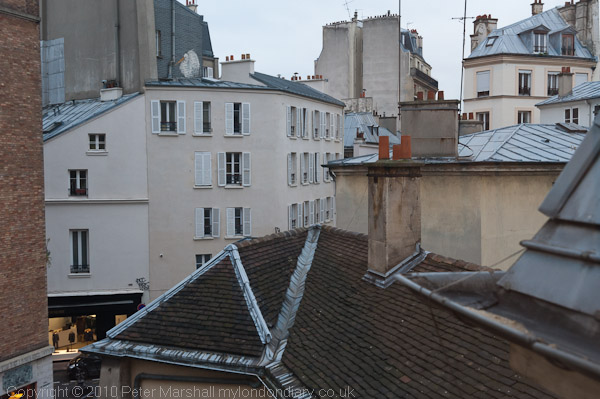
By now it was getting a little late and the light was beginning to fade as we came to the final show of the afternoon, which was also a highlight. This was in the fine mansion of l’Hotel de Sauroy on the rue Charlot, and was a travel show with a difference, part of the MdP. Nous avons fait un tres beau voyage which included prints by Jacques Borgetto, Françoise Nuñez (from the Galerie Camera Obscura), Bernard Plossu (from the Maison Européenne de la Photographie) and Sophie Zénon. All of these are interesting photographers, but it was particularly the work of Plossu that caught my attention.
More pictures on My London Diary.